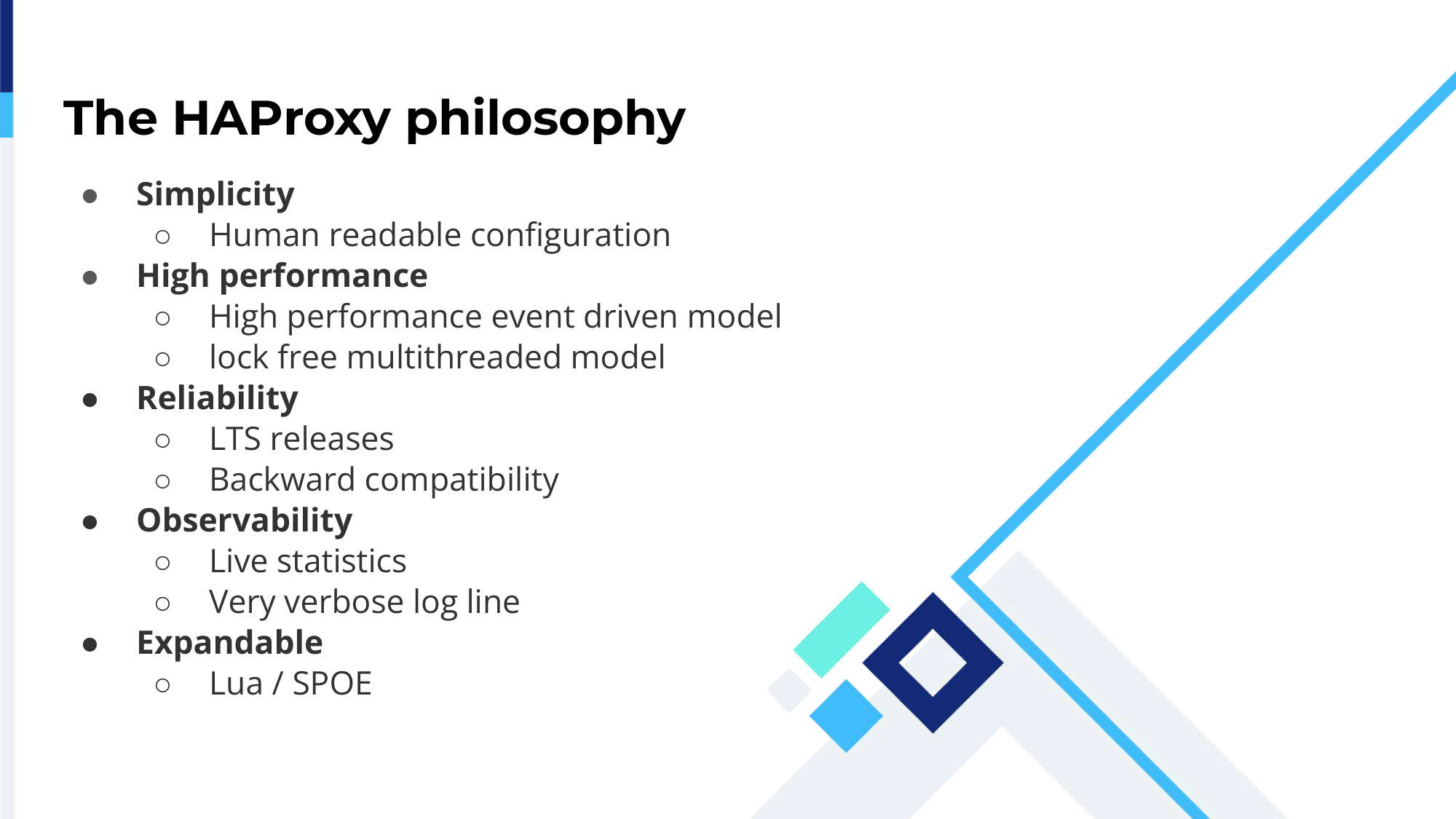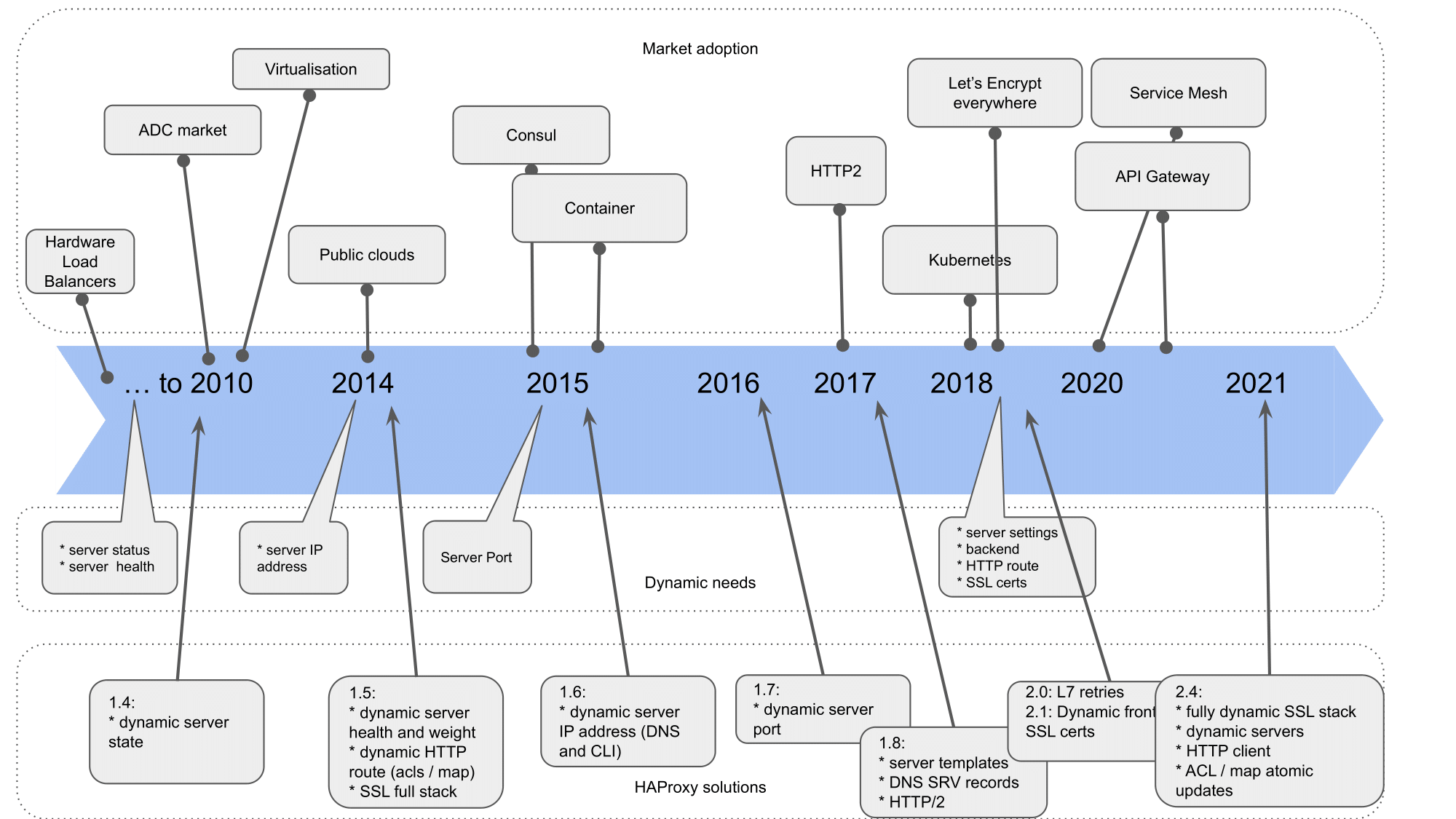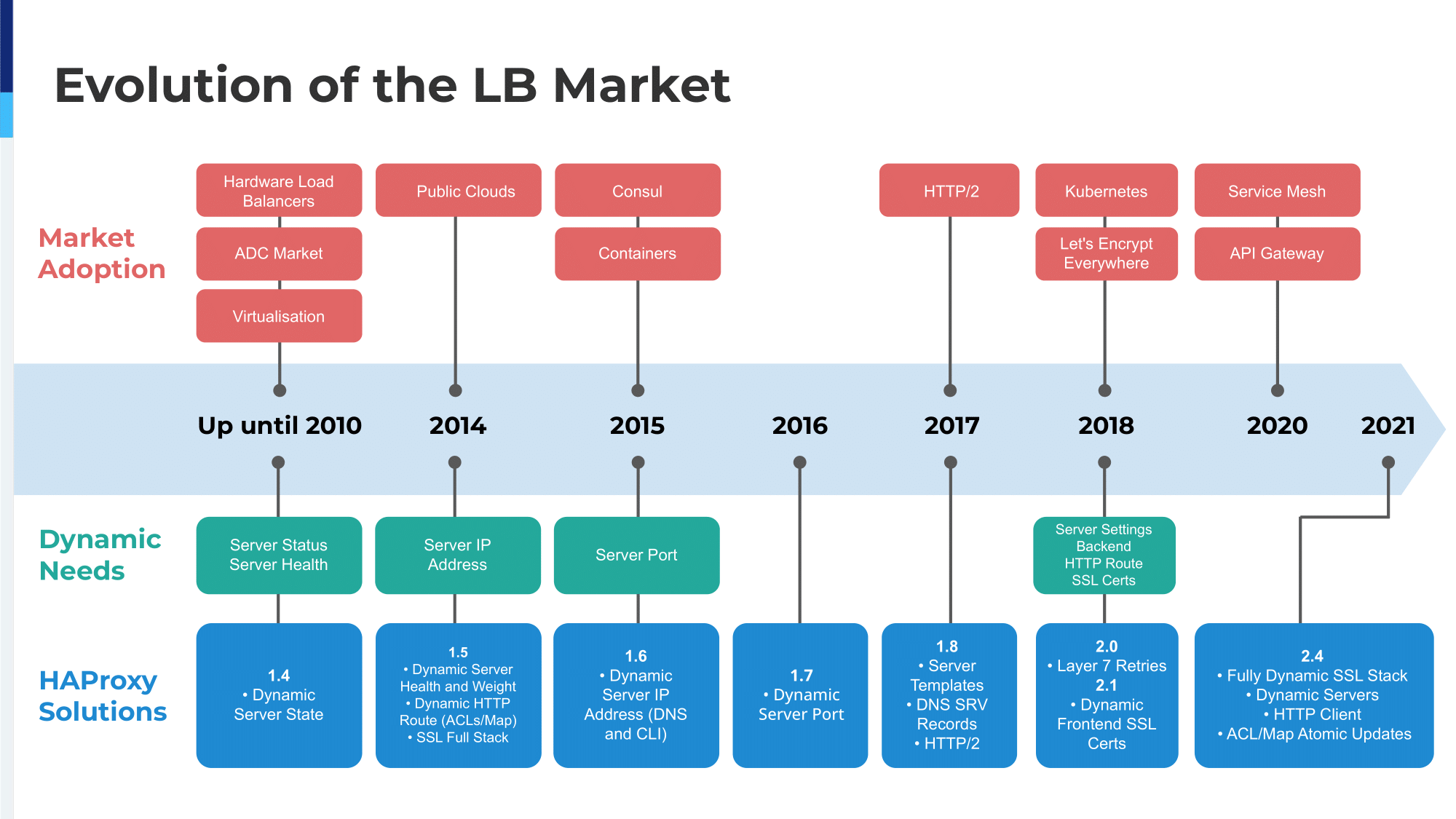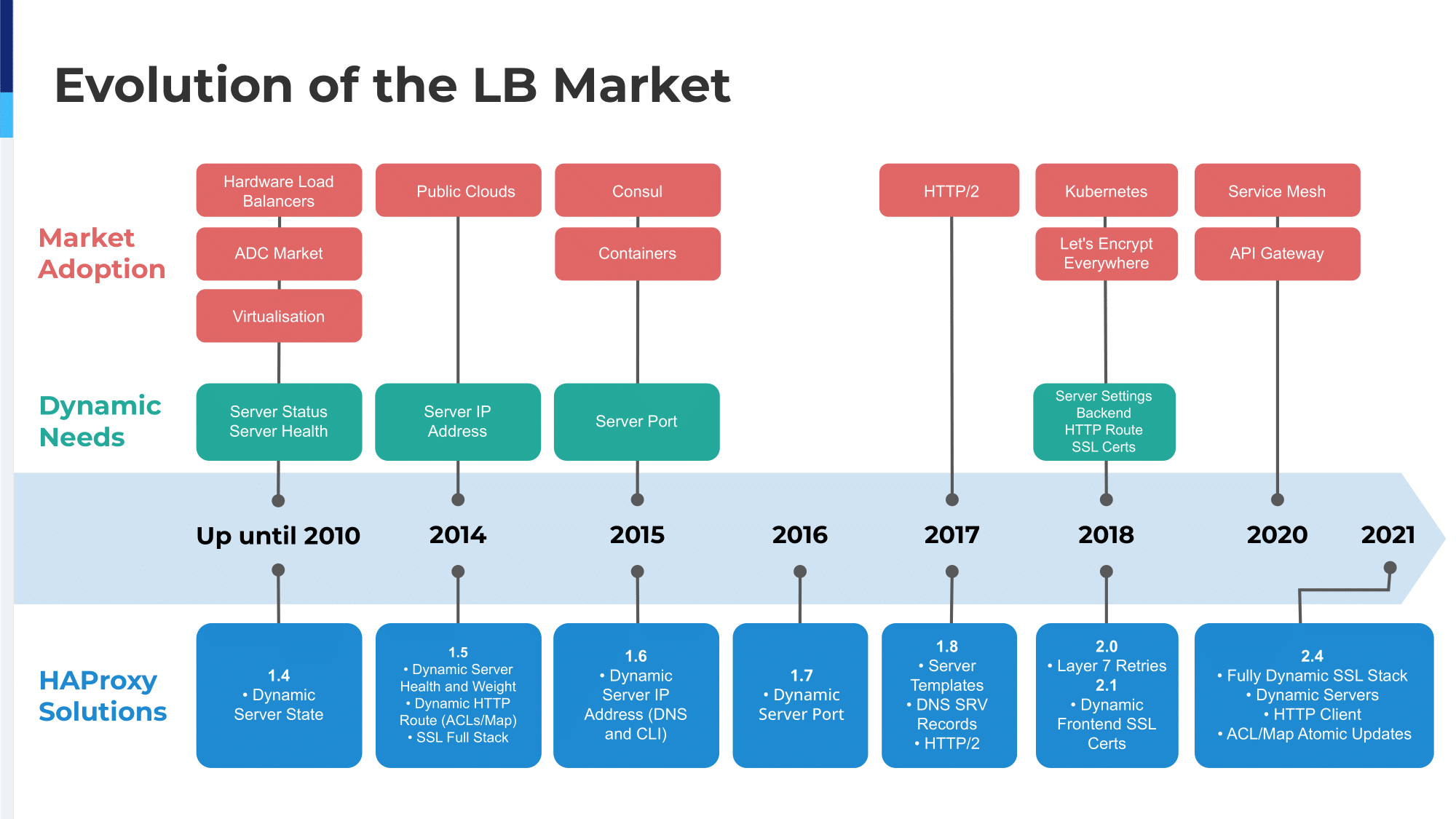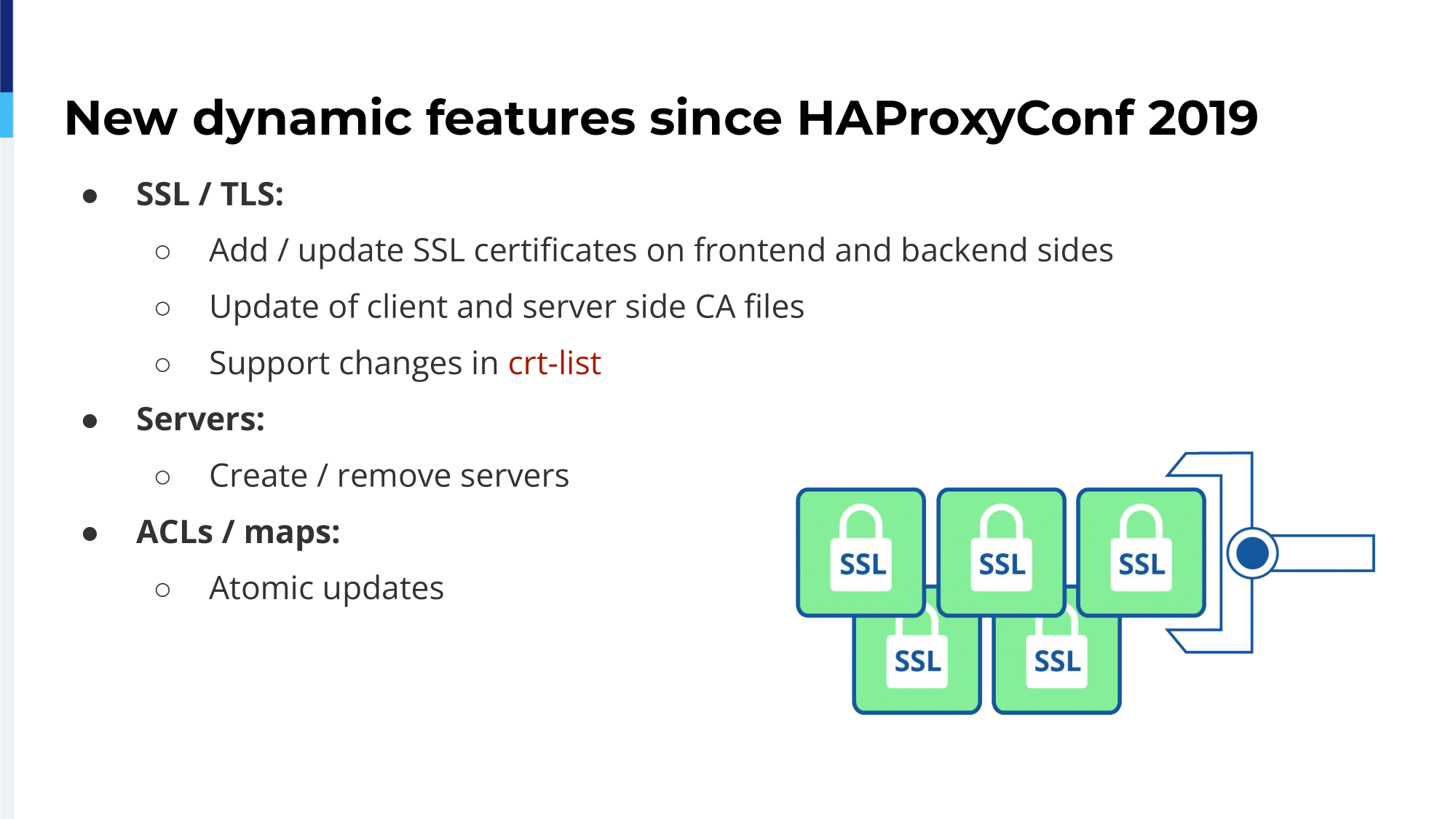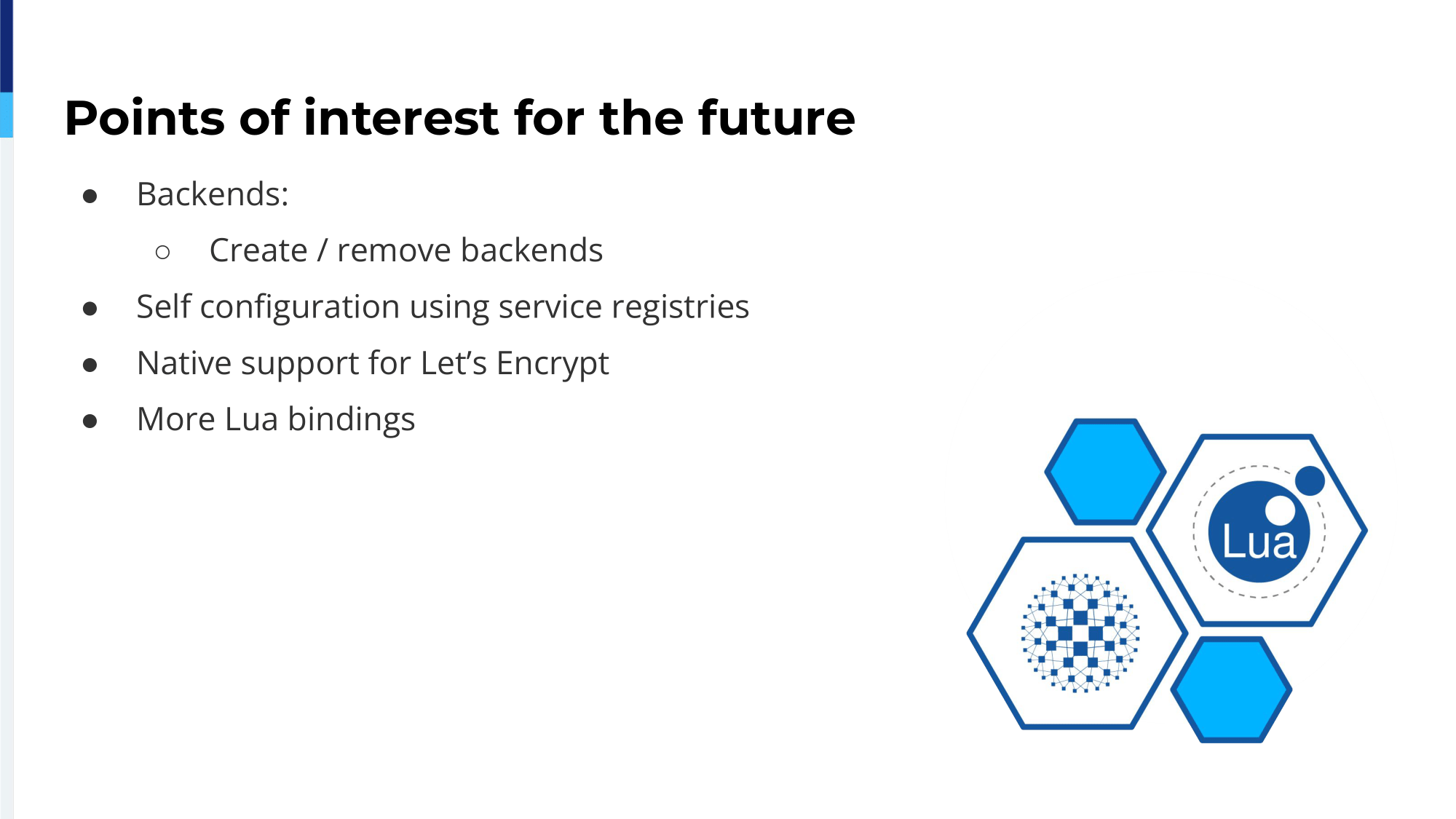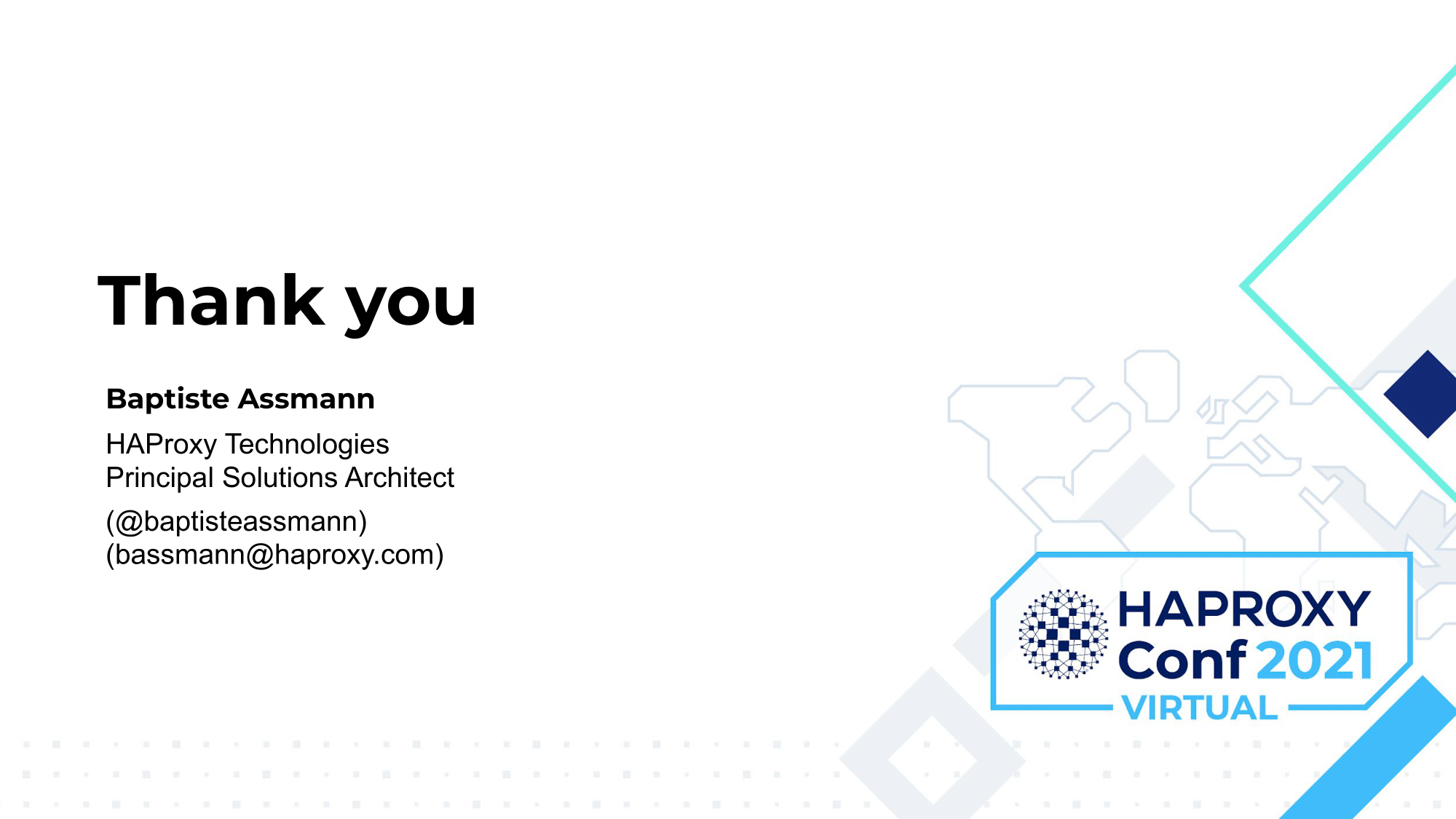HAProxy Technology’s Director of Product, Baptiste Assmann, opened HAProxyConf 2021 with his keynote, in which he explained the main pillars of the HAProxy design philosophy and how they’ve kept HAProxy modern for 20 years. The load balancing market has evolved greatly over that time, and HAProxy, of course, has had to be able to make course adjustments to remain a market leader.
Baptiste explained how HAProxy had its own solutions to user needs during each period during that time. For example, in 2010, HAProxy 1.4, unlike its hardware appliance competitors, offered the ability to enable and disable servers dynamically, which made server maintenance more convenient. The latest trend has been service mesh and the use of API gateways, as well as the growing consensus to encrypt all traffic. The HAProxy 2.4, released in 2021, bring the features to fill the gap:
Full dynamic SSL stack — you can change SSL certificates on the frontend or backend side.
Dynamic servers
HTTP client — it allows a Lua script to get connected with third parties
ACL/Map atomic updates — a convenient way of managing your ACL content

One of the points of interest for the future, Baptiste said, is that users want to be able to create and remove backends as well as the servers assigned to them. You’ll be able to create a new backend, populate servers, update the route from the frontend to the backend, and turn on the traffic flow. All of this without changing or reloading your load balancer process. Also, the plan is that HAProxy should be able to self-configure itself using service registries. In the end, Baptiste emphasized that more Lua bindings are coming — many available HAProxy features are yet to be available in Lua.
Watch the full conference talk above, and if you find it interesting, you can also watch:
Slide Deck
Here you can view the slides used in this presentation if you’d like a quick overview of what was shown during the talk.



